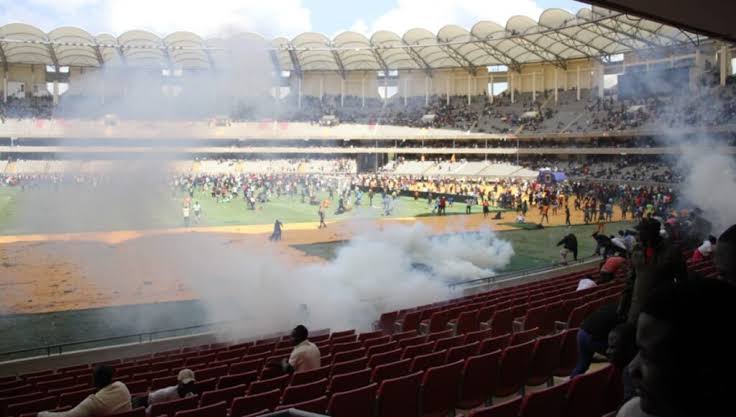The recent events at Moi International Sports Centre, Kasarani, have sparked widespread debate about police conduct and the government’s approach to crowd management.
What began as a peaceful and emotional farewell to the late Raila Odinga turned into a tragic day marked by loss and chaos.
As new details emerge, the focus has shifted to the actions of police officers who were tasked with maintaining order but are now being blamed for using excessive force.
According to the autopsy results, three mourners lost their lives from gunshot wounds sustained during the stampede at Kasarani.
One of the victims reportedly died from a single bullet wound to the head. These findings have intensified public outrage, with many Kenyans demanding justice and accountability.
Activists and human rights defenders argue that there was no justification for the use of live bullets in a crowd of unarmed civilians who had gathered to pay their respects.
Video footage taken during the incident paints a disturbing picture of the day. The clips show police firing live rounds and tear gas as thousands of mourners struggled to enter the packed stadium.
The situation quickly spiraled out of control as terrified people tried to escape the chaos. Some were trampled, others collapsed due to tear gas, and many sustained injuries while trying to flee. Interior Cabinet Secretary Kipchumba Murkomen was even seen gesturing for officers to stop firing, a sign of how serious the situation had become and how command had seemingly broken down.
Police officers later claimed they were forced to use live ammunition because the crowd had become unruly and dangerous.
However, this explanation has been rejected by both eyewitnesses and human rights groups, who maintain that the situation could have been managed without violence.
They insist that the use of live bullets against civilians was both unlawful and irresponsible.
The Independent Policing Oversight Authority (IPOA) has launched an investigation to determine exactly what happened and who was responsible for firing the fatal shots.
Activist Hussein Khalid, who has been following the case closely, urged IPOA to ensure that the investigation is thorough and transparent. He warned that continued impunity within the police service only worsens public mistrust.
Amnesty International Kenya and other advocacy groups have also condemned the police response, describing it as a clear violation of human rights.
They are calling for disciplinary and criminal action against the officers and commanders involved. Former Nairobi Governor Mike Sonko offered to cover burial costs for the victims, describing the tragedy as a stain on the nation’s conscience.
Tragically, not all deaths were caused by bullets. Among those who died was a mother of three who suffocated in the stampede. Medical officials confirmed that more than a hundred people were injured during the chaos.
Witnesses said the tragedy could have been avoided if there had been better coordination between event organizers and security agencies.
Public anger has continued to grow, with Kenyans online calling for reforms in how national events are handled and how the police use force. Many believe that this incident reflects deeper issues in Kenya’s policing culture, including lack of accountability and inadequate training in crowd management.
The Kasarani tragedy serves as a painful reminder that moments meant to unite a nation in mourning can easily turn deadly when order and responsibility fail.
For many Kenyans, justice for the victims will only come when those responsible are held to account and lessons are learned to prevent such a tragedy from ever happening again.





















Add Comment